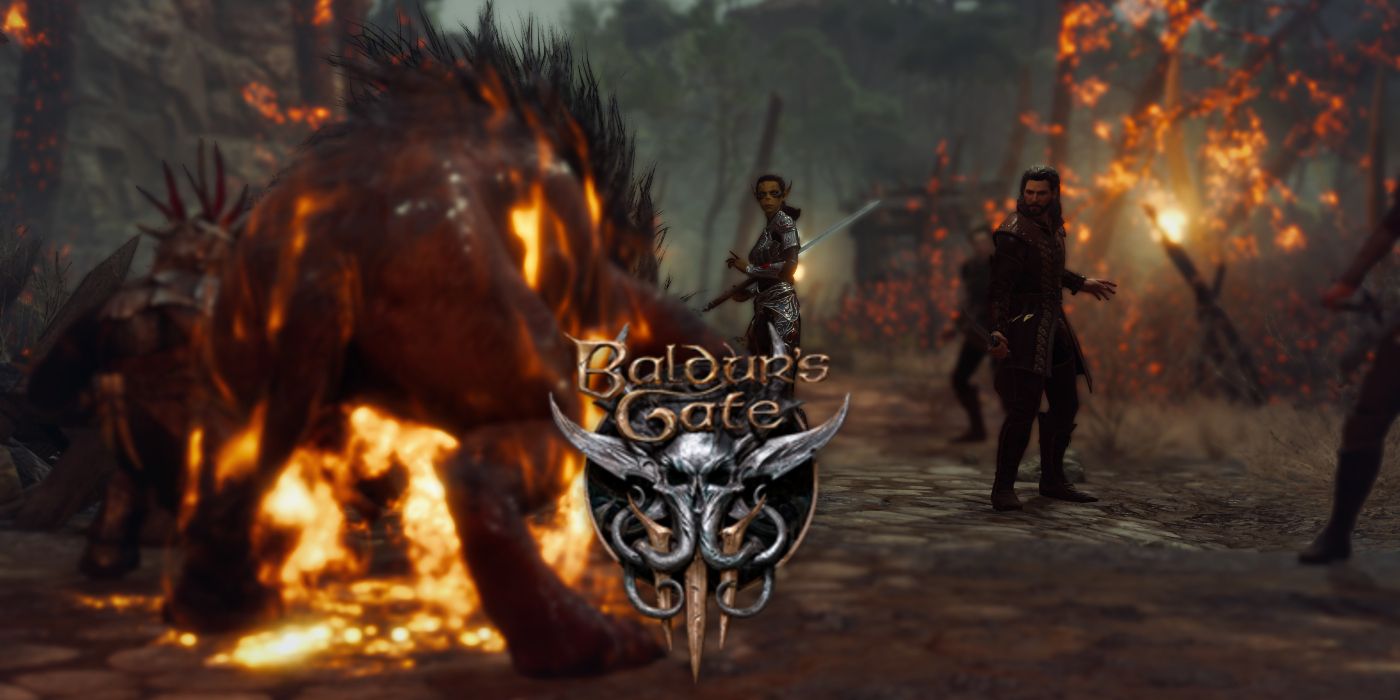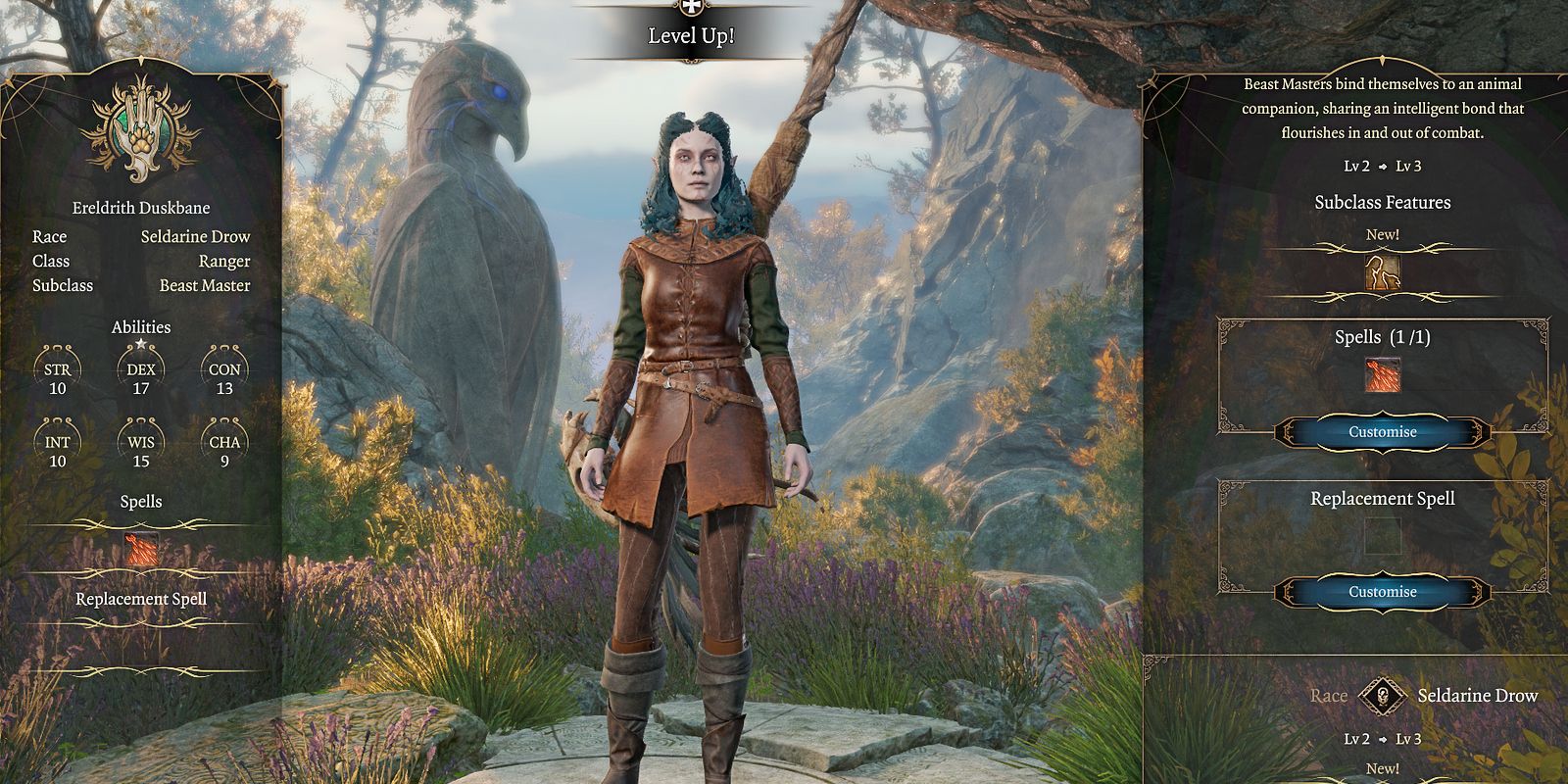How Baldur’s Gate 3 Changes & Improves D&D Character Classes
In the process of adapting D&D’s rules to the Baldur’s Gate III cRPG, developers at Larian improved the utility of certain classes and spells.
You Are Reading :How Baldur’s Gate 3 Changes & Improves D&D Character Classes

With the recent release of Baldur’s Gate 3 in early access, fans of Dungeons & Dragons, the world’s oldest roleplaying game, have been analyzing how well the latest publication of Larian Studios has recreated the storytelling and drama of tabletop D&D in a virtual environment. Fewer fans have been talking about Larian’s translation of tabletop rules for certain spells and character classes, not only making them workable in Baldur’s Gate III, but also improving the utility of previously suboptimal abilities through rule changes that could be retro-applied to D&D 5th Edition.
With each new iteration of Dungeons & Dragons, from its origins in 1970s miniature wargaming to the 2nd, 3rd, 4th, and 5th editions, the world’s oldest roleplaying game has grown more complex in some ways and more streamlined in others. A simple three class division of Fighter, Cleric, and Magic User ballooned into a more colorful thirteen character class system, with multi-classing rules allowing player to theoretically bring any character archetype to life. On the simplicity side of things, developers of D&D 5th Edition have striven to make their gameplay rules more clear and intuitive; a spell which boosts a character’s skill rolls, for instance, will generally let a player roll an extra die rather than adding a flat numerical bonuses.
As a consequence of this perpetual quest to improve the playability of D&D, the utility of certain classes, spells, Feats, and play-styles has fluctuated greatly over the years. The Dungeons & Dragons Bard, as an example, was infamous for being a useless class in earlier editions of D&D, but is now seen as a magical powerhouse in 5th Edition thanks to its powerful enchantments and useful support skills. The Ranger class, on the other hand, went from being the go-to pick for fans of Aragorn from The Lord Of the Rings to a class seen as useful only in certain situations. By adapting and re-balancing the rules of D&D 5e to Baldur’s Gate 3 Early Access, Larian Studios is arguably making their own new edition of Dungeons & Dragons. The results of their attempt are interesting, to say the least.
Baldur’s Gate 3 Re-Balances Some Character Classes – Yes, Rangers Too

Most of the character classes in 5th edition Dungeons & Dragons, though not balanced perfectly in terms of raw power levels, satisfy players who use them thanks to specializing in certain roles. Fighters can hit hard with any weapon and tank damage, Clerics heal, D&D’s Wizards have spells for any situation, Rogues can sneak, Monks can move and strike fast, Bards buff allies and charm strangers, etc.
One of the reasons the Ranger is somewhat underpowered in D&D 5th Edition stems from how its role – tracking and hunting prey – is only useful under certain circumstance. The Ranger’s starting unique features, Favored Enemy and Natural Explorer, gives Rangers bonuses to fighting certain types of enemies or navigating certain terrains, but if players don’t encounter those enemies or terrains, these abilities are useless. Finally, the signature ability of the Ranger’s Beast Master subclass, an animal companion, can only attack if the player character gives up the chance to attack themselves.
Baldur’s Gate 3 fixes the issues with the Ranger by completely rewriting its three problem abilities. Favored Enemy and Natural Explorer now grants players new useful skills, spells, and proficiencies depending on the prey they pursue: for example, the Protection from Evil and Good spell if they hunt other-planar creatures, or proficiency with disguise kits if they hunt humanoid criminals.
The Beast Master subclass’s animal companion now also attacks on its own initiative and can be resurrected if it falls in battle. These ability changes in Baldur’s Gate 3 can easily be implemented mechanically in a tabletop game of D&D to improve the Ranger experience (to the delight of fans of Aragorn and Drizzt Do’urden, no doubt).
Baldur’s Gate 3 Improves the Action Economy Of Certain Spells

In Dungeons & Dragons 5e’s tabletop gameplay, victory often goes to adventurers who optimize their use of the Action Economy, the total number of Actions and Bonus Actions a party can take per turn. Spells like “Healing Word” are popular among players because they can cast them as a bonus action and still make a weapon attack as a main action. By the same token, the least popular spells in D&D are those that make poor use of the action economy. A classic example of this is the “True Strike” Spell, a 1 Action Cantrip which gives players Advantage (i.e. roll a D20 die twice and take the higher result) on their next attack. It sounds good, but it’s much, much more efficient to just attack twice.
The developers of Baldur’s Gate 3 improved True Strike by having it grant advantage to the next two attacks of a character, making the cantrip a much more efficient spell. They’ve also buffed flavor spells such as Mage Hand (which can now be used to push enemies) and Thaumaturgy (which boosts a player’s chances of intimidating or persuading strangers), giving them extra utility in and out of combat.
While these adjustments to character classes and abilities make for a better experience for Baldur’s Gate 3 players, these changes could also easily be introduced into homebrew Dungeons & Dragons campaigns as well.
Link Source : https://screenrant.com/baldurs-gate-3-dungeons-dragons-spells-classes-changes/
